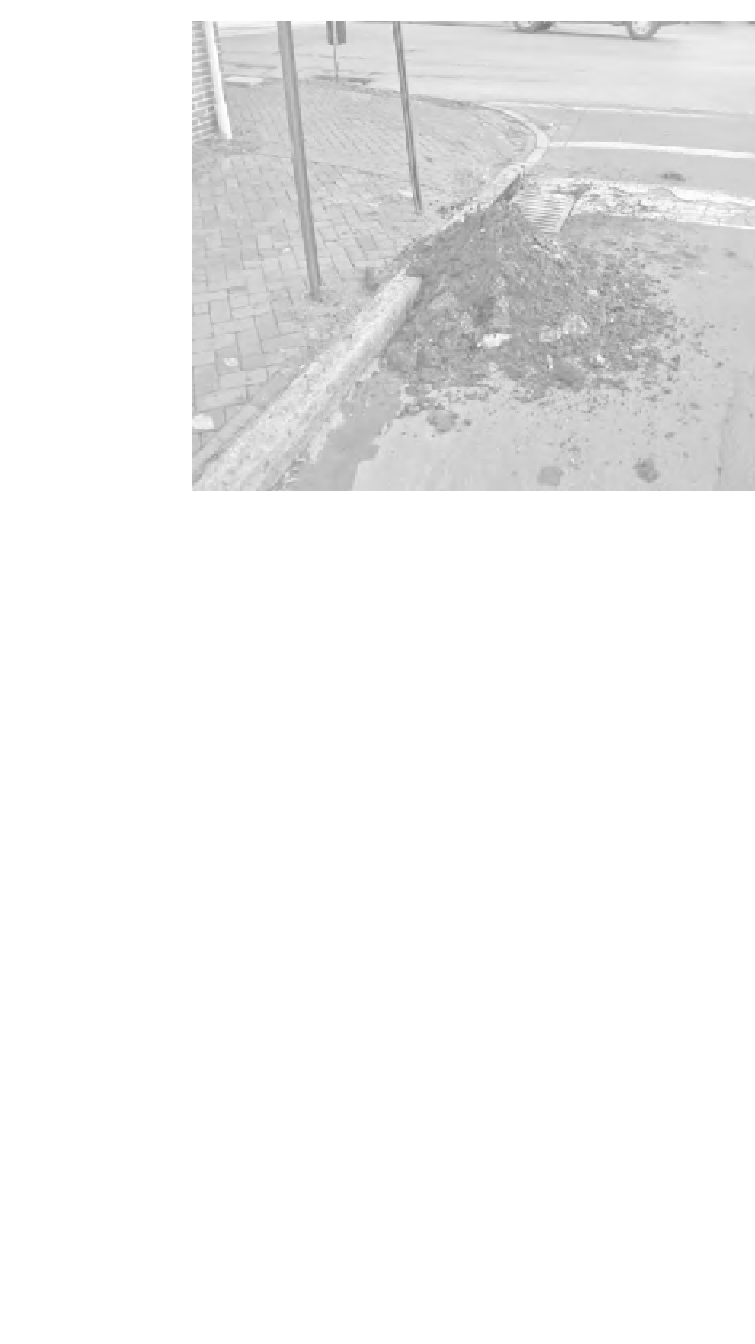Environmental Engineering Reference
In-Depth Information
Figure 2-8
Non-point source pollutants in the urban landscape are conveyed in street
runoff.
Increased Pollutants in Urban Runoff
After the passing of a thundershower, we find both the air and the land surface
much cleaner. All of the atmospheric dust and surface organic detritus, from tree
leaves to animal wastes, have been washed from the surface and carried from
gutters and roadways to surface inlets, where they enter, accumulate, and are
forgotten until the sewer no longer flows (Figure 2-8). When these pollutants
reemerge downgradient from a storm sewer and discharge to the nearest stream
or waterway, we previously considered the problem solved, in terms of our local
community, and gave little consideration to our neighbors downstream. The phys-
ical and chemical contents of this stormwater vary and are quite different from
the steady discharge of wastewaters from our sewage treatment facilities.
It is this basic difference in pollutant discharge between point (municipal and
industrial wastewaters) and non-point sources (conveyed in stormwater runoff)
that makes the regulatory process so difficult. In many states, following federal
guidance, a sort of pollution bookkeeping process, referred to as total maximum
daily load (TMDL) analysis, is applied to determine the level of pollutant reduc-
tion (by specific chemical) required to achieve the desired level of water quality.
Unfortunately, the use of the term
daily
is inadequate to compare the two very
different types of mass discharge, with only point sources occurring on a daily
basis. A better solution would be to consider the annual loading generated by the
two types of sources on an annual basis, prior to selecting the appropriate load










Search WWH ::

Custom Search